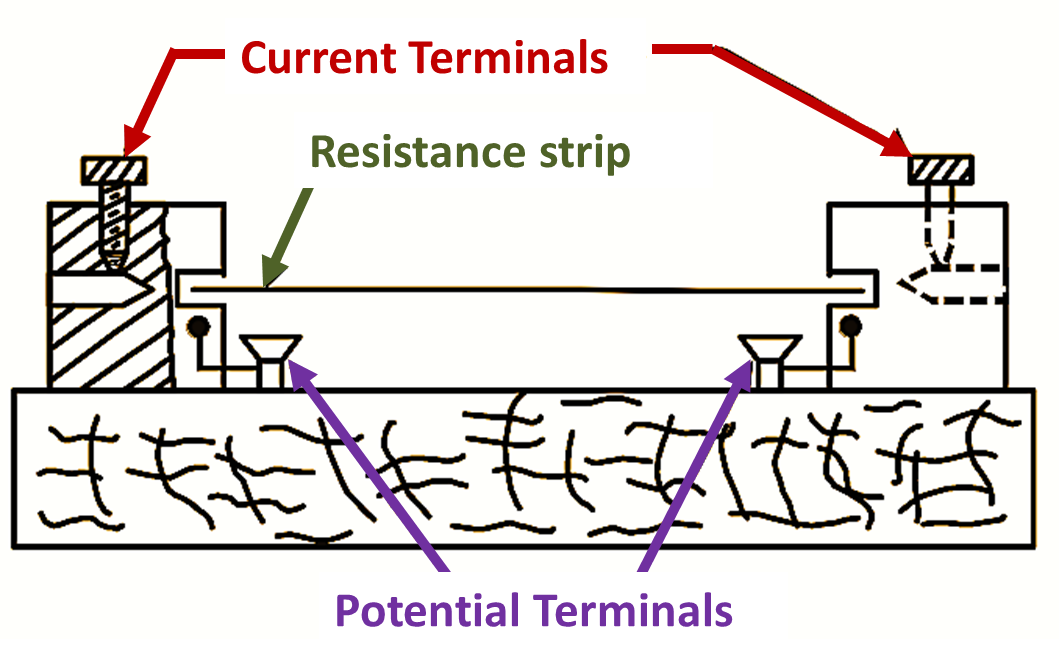Shunts are precise low resistance. These may be used either for D.C. or AC. circuits. A simple form of the shunt resistor is shown in Fig. 1.

Fig. 1: Shunt Resistor.
Shunts for D.C. Circuits
Precise low resistances of an accuracy of 0.1
- Permanent and simple construction.
- Adequate and well designed current and potential terminals.
- Low temperature coefficient.
- Small thermoelectric e.m.f.
- Adequate cooling.
Manganin is most commonly used material for shunts. Constantan and Therlo are also used by some people for shunts. All the shunts have four terminals, two for attachement of the current carrying leads and two for measurement of potential drop across it. The first pair of terminals are current terminals, while the second pair are potential terminals. It uses manganin strip or strips hard soldered into copper end pieces which are shot soldered into copper blocks (Fig. 1). The current terminals are made on the copper blocks at the ends remote from the resistance strip to ensure a uniform current density in the region of the points of connections to the measurement circuit. To ensure a fixed potential drop across the shunt, the potential terminals must be made nearer to the resistance where the current density is uniform.
To keep the temperaure within limit, oil and forced cooling may be adopted. For heavier power rating the resistance strips are bent to a U-shape and immersed in oil in a container. The oil may be stirred by a motor-driven propeller. For even large power oil is cooled by circulating cold water through a helical tube in it.
Shunts for A.C. Circuits
The shunts for A.C. circuits should be non-inductive. The bifilar method can be used for this purpose. For heavy current shunts two concentric cylinders of manganin and carrying currents in opposite directions are used. The two cylinders are joined together by silver soldering a common copper ring at one end. At the other end, the two cylinders are joined similarly to two separate copper rings attached to copper rods leading to the current terminals. This can be used for frequencies upto 1 kHz. But due to the development of accurate transformers the demands of heavy current AC. shunts have been decreased.